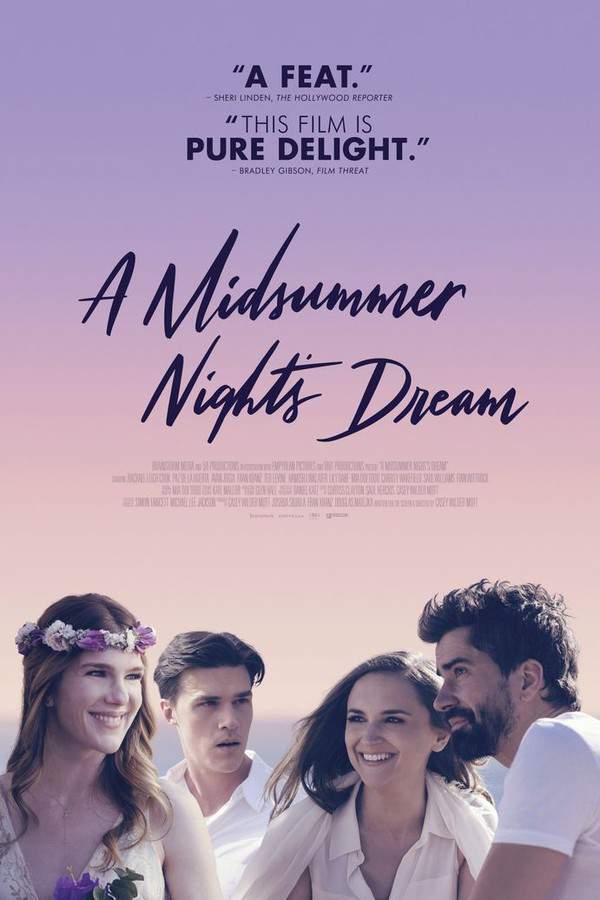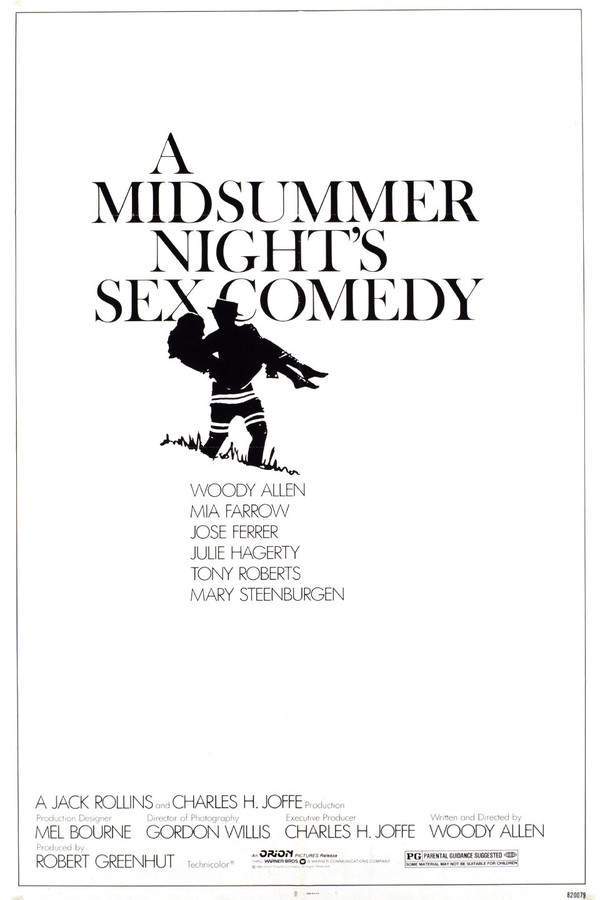
A Midsummer Night’s Dream
Year: 1935
Runtime: 143 mins
Language: English
Directors: Max Reinhardt, William Dieterle
Based on Shakespeare’s immortal comedy, four Athenian youths flee to a moonlit forest where the fairy king and queen are at odds. In the same wood a group of amateur actors rehearses a play, and mischievous Puck applies a love‑inducing flower, causing tangled romances and comic confusion among mortals and sprites alike.
Warning: spoilers below!
Haven’t seen A Midsummer Night’s Dream yet? This summary contains major spoilers. Bookmark the page, watch the movie, and come back for the full breakdown. If you're ready, scroll on and relive the story!
A Midsummer Night’s Dream (1935) – Full Plot Summary & Ending Explained
Read the complete plot breakdown of A Midsummer Night’s Dream (1935), including all key story events, major twists, and the ending explained in detail. Discover what really happened—and what it all means.
Hermia, Olivia de Havilland loves Lysander, but her father, Egeus, has chosen Demetrius for her, and the mighty Duke Theseus, Ian Hunter, sets the grim choice before her: obey the law and wed Demetrius, or embrace a life of chastity as a follower of Diana. The tension of this ultimatum threads through the first act, paired with a backstage subplot in which Peter Quince and a band of amateur actors, led by Quince himself, rehearse a skit about the tragic lovers Pyramus and Thisbe. The troupe’s energy crackles as the overconfident Bottom contends for extra roles, and Quince reminds everyone to meet beneath the Duke’s oak before the performance. In the forest beyond Athens, a second drama brews: Oberon, the fairy king, [Victor Jory], and Titania, his queen, are locked in a dispute over a changeling child. Titania refuses to relinquish the child to Oberon, which fuels his plan to teach her a lesson using magic. He enlists his mischief-maker Puck, [Mickey Rooney], to procure a love-in-idleness flower whose pollen will seize the eye and heart of whoever first gazes upon awakening.
In parallel, Hermia and Lysander flee into the forest, seeking to elope, while Demetrius relentlessly pursues them, pursued in turn by Helena, who pines for him despite his mumbles and insults. Oberon watches this tangled pair of couples with a wily glint and orders Puck to use the flower’s spell on Demetrius so he will fall for Helena. But mischief—and a lack of careful labeling—causes Puck to mistake Lysander for Demetrius and to apply the potion to Lysander’s eyes instead. The forest becomes a stage for magical chaos: Lysander awakens to Helena’s presence and instantly loves her, leaving Hermia bewildered and heartbroken. Meanwhile, the donkey-headed Bottom is transformed by Puck’s prank, and Titania, waking, falls hopelessly in love with the transformed figure, Bottom. Oberon, observing the farce, retrieves the changeling and sets about mending the spell, while Titania’s enchantment lingers as the night deepens.
As night deepens into morning, Oberon instructs Puck to correct the mistaken affections. He orders the potion on Demetrius’s eyes as well, so that when he wakes, he will love Helena too. The result is a cascade of comic catastrophe: both Lysander and Demetrius are bewitched to pursue Helena, and a squabble erupts among Hermia, Helena, Lysander, and Demetrius as each boy claims the other’s beloved. The quarrel crescendos into a near-duel, until Oberon commands Puck to separate the lovers and remove the charm from Lysander. Titania remains under the charm, still enamored with the donkey-headed Bottom, until Oberon lifts that enchantment as well. With the fairy king’s blessing, the lovers awaken as if from a dream, and the spellbound chaos dissolves into a fragile harmony.
The woodland fairies retreat with the changeling while Oberon and Titania reconcile, and Puck works to put everything back to rights. The enchantments fade, and the lovers return to Athens with the sense that last night’s events may have been nothing but a dream. Back in the human world, Theseus and Hippolyta—whom the wedding the court anticipates—are set to merge the two couples: Hermia will wed Lysander, and Helena will wed Demetrius, while the court approves, less by law and more by a broader sense of providence and fate. The newly united pairings stand ready to join the wedding celebration, and the troupe of Mechanicals performs Pyramus and Thisbe for the guests. The play falters comically on its own terms, drawing laughter rather than tears, yet the night ends with blessing and renewal. As the curtain of the forest falls, the mischievous Puck hints that what has just unfolded might be nothing more than a dream, leaving everyone to drift toward bed and morning with a sense of wonder and relief.
In the ensemble of the tale, the cast threads a delicate balance between love’s wobbly misfires and the charm of a world where trickster magic can bend hearts without breaking them. The characters weave in and out of misread signals, unmasking vanity and desire alike, and the play-within-a-play at the Duke’s wedding provides a final, earthy humor that contrasts with the dreamlike twilight of the forest. Throughout, the performers—Olivia de Havilland as Hermia, Dick Powell as Lysander, Ross Alexander as Demetrius, Jean Muir as Helena, Ian Hunter as Theseus, Verree Teasdale as Hippolyta, Victor Jory as Oberon, Anita Louise as Titania, Mickey Rooney as Puck, Frank McHugh as Quince, James Cagney as Bottom, and the rest of the company—navigate love, jest, and enchantment with a mixture of wit, reverence, and cheeky vitality. The result is a timeless tapestry of romance and comedy, where the line between dream and waking life blurs in the glow of moonlit mischief and theatrical laughter.
Last Updated: October 09, 2025 at 11:16
Unlock the Full Story of A Midsummer Night’s Dream
Don't stop at just watching — explore A Midsummer Night’s Dream in full detail. From the complete plot summary and scene-by-scene timeline to character breakdowns, thematic analysis, and a deep dive into the ending — every page helps you truly understand what A Midsummer Night’s Dream is all about. Plus, discover what's next after the movie.
A Midsummer Night’s Dream Timeline
Track the full timeline of A Midsummer Night’s Dream with every major event arranged chronologically. Perfect for decoding non-linear storytelling, flashbacks, or parallel narratives with a clear scene-by-scene breakdown.

Similar Movies to A Midsummer Night’s Dream
Discover movies like A Midsummer Night’s Dream that share similar genres, themes, and storytelling elements. Whether you’re drawn to the atmosphere, character arcs, or plot structure, these curated recommendations will help you explore more films you’ll love.
Explore More About Movie A Midsummer Night’s Dream
A Midsummer Night’s Dream (1935) Scene-by-Scene Movie Timeline
A Midsummer Night’s Dream (1935) Movie Characters, Themes & Settings
A Midsummer Night’s Dream (1935) Spoiler-Free Summary & Key Flow
Movies Like A Midsummer Night’s Dream – Similar Titles You’ll Enjoy
Much Ado About Nothing (1993) Complete Plot Breakdown
A Midsummer Night's Dream (1999) Full Summary & Key Details
A Midsummer Night's Sex Comedy (1982) Ending Explained & Film Insights
National Theatre Live: A Midsummer Night’s Dream (2019) Full Summary & Key Details
Shakespeare Retold: A Midsummer Night’s Dream (1000) Ending Explained & Film Insights
Midsummer Madness (2007) Film Overview & Timeline
Midsummer Dream (2005) Spoiler-Packed Plot Recap
A Midsummer Night’s Rave (2002) Spoiler-Packed Plot Recap
Dream of a Summer Night (1983) Full Movie Breakdown
A Midsummer Night’s Dream (2022) Movie Recap & Themes
A Midsummer Night’s Dream (1968) Spoiler-Packed Plot Recap
A Midsummer’s Night Dream (1959) Ending Explained & Film Insights
Were the World Mine (2008) Ending Explained & Film Insights
Twelfth Night (1996) Full Summary & Key Details
A Midsummer Night’s Dream (1925) Complete Plot Breakdown

















